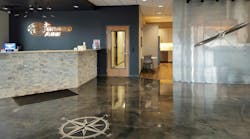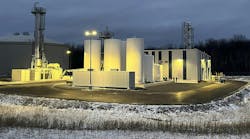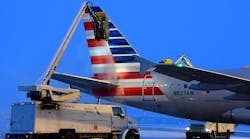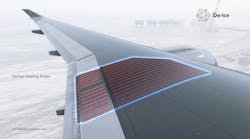Earlier this month, John Goglia asked a simple question in a blog after he read the news about a deicing incident in Canada: Is high turnover on the ramp causing simple errors?
We posted John’s blog on several LinkedIn groups, including our own, and received almost 20 responses. Have a look at a handful of responses:
“Without a shadow of doubt, yes!! In the last 20 years I have seen a shift from Full-Time employment to that of Part-Time Employment. Thus, what was once seen as a career working on the Apron and climbing the ladder. We now see the role as nothing more than a ‘job’, and one that has to be supplemented by another Part-Time job in another industry just to make ends meet. Combine this with a sever lack of training, auditing, commitment to safety from Senior Management, poor procedures (need I go on?)……..then inevitably we will see a high turnover of employees and non-commitment and loyalty to the job in hand, company etc.
“We are seeing an increase in our industry that has not happened since the early 1990’s, so we already a generation behind in our industry in experienced, skilled and competent professionals. ICAO have already stated that we are looking at a possible 2,000,000 personnel shortage in the next 20 years of Flight Crew, Aircraft/Flight Engineers and AGL – and that does not even include Ground Personnel. Big food for thought when you factor in that IATA are saying that we will see a large percentage of Aviation Professionals retiring from 2015 onwards. So, coming into our industry at this time, the world will be their oyster.”
“I don't know that turnover is much of an issue in today's environment and as others have stated, Training is the key. Having said that there are factors that make deice training especially difficult. For example, when training an employee in fueling operations classroom instruction is given first and is immediately followed up with practical training. During that practical training the employee will be able to see many aircraft fueled in the course of a day and memorize what occurs during fueling operations.
“Deice training, both classroom and practical, is conducted as close to the beginning of the winter season as possible. However, since we are dealing with the weather, that training may occur well in advance of the first snowfall and the memorization that occurred during training may be lost. Additionally, there is a huge difference between a city like PHL where there is a highly complex, state of the art deicing system that deices about 1,500 aircraft per year and YYZ that has a similar deicing system but deices 10,000 plus aircraft per year.
“So in answer to the question...no...deicing is probably one of the only areas where we are not seeing an increase in incidents due to high turnover rates.”
“In my experience I have investigated and been able to prove and substantiate that turnover is if not the leading causal factor in flightline incidents, then at minimum a contributory factor. There is no doubt at all that we place employees with limited training, rushed training and poor training on the ramp every day in the name of "high turnover" and supporting the "get it done" mentality.
"In today's aviation environment, where less is more and businesses try to operate as lean as possible, we are setting ourselves up for catastrophic failure. And in our line of work, catastrophic usually includes millions of dollars in damage and loss of life. Whether our company fuels airplanes, works the ramp or handles deicing operations, the process MUST begin with thorough and well designed training. We can do the job while operating in a lean environment, but we must place training and safety at the very tip of the spear, unless we want to become the stars of the next NTSB accident investigation.
“I know in many US deicing operations, they rely on "part-time" employees, usually quickly trained and then waiting on call to be rushed to service. The problem with this process is a decided lack of hands-on acclimitzation before they have to actually respond to their first call-in. There needs to be more concise training, more focused and graduated training that walks each new hire through their specific job or jobs using a process of "Watch me do it - do it with me - I watch you do it", as well actual oversight by the leadership to catch and correct issues before they cost the company in delayed flights or damaged aircraft.
“It takes time to train a capable workforce, but if you as the employer want to succeed, you need to take that time. There is no shortcut in our world.”
“I must agree with Larry, in Canada, where the use of CDF (Centralized Deicing Facility) with single service provider the issues of high turnover is almost a non factor. The core staff is the same staff that sprays from year to year and their experience and professionalism just improve with the years.
“The root cause for this incident was flight crews requesting to have the fuselage sprayed with Type 4. This type 4 sheered of the fuselage during the spray and entered the APU inlet at the back of the fuselage. The aircraft was sprayed properly! no glycol was sprayed into the engines and the application of TIV on the back side of the fuselage was stopped about 10ft away from the APU inlet.
Staff turnover had nothing to do with this incident.”
“I agree that hi turnover times can bring to errors, but also Keith suggested a possible cause of the accident you’re talking about. In fact it’s true that it is not necessary to spray the de-icing fluid into a running engine to cause smoke in the cabin. Especially B737 fish mouth engines are so close to ground, that everything in its intake area, inclusive de-icing fluid, will be ingested. Therefore, de-icing areas in airports must have special characteristics that avoid formation of fluid puddles.
“I supervised aircraft de-icing for many years, and I noticed that the de-icing company worked very quick, but not always observing all the right procedures. Working fast is ok to avoid delays, but security at first.
“That’s why the company I was working for, always wanted well trained personnel at aircraft during de-icing process, to supervise.
“Every year, before start of winter season and de-icing period, we had to attend a de-icing refresh course with final test, like a licence for internal use only. Without attending the course we weren’t allowed to assist or supervise any de-icing process.
The main sense of supervising the process was for security reason, but also to maintain a correct coordination between cockpit procedures and de-icing vehicles/teams.
“Aircraft handling as well as the de-icing process, must work like a watch. Everything must be in the right sequence. “




